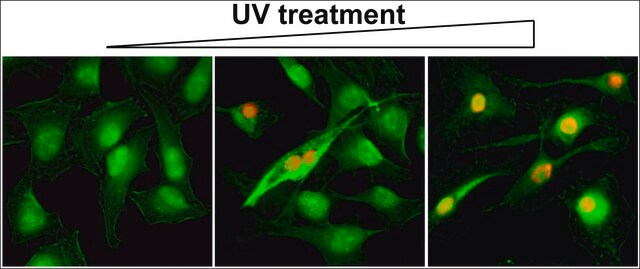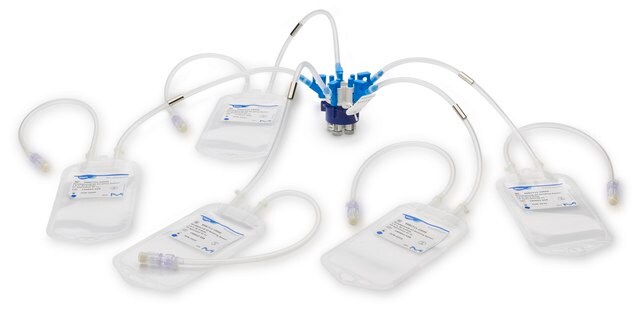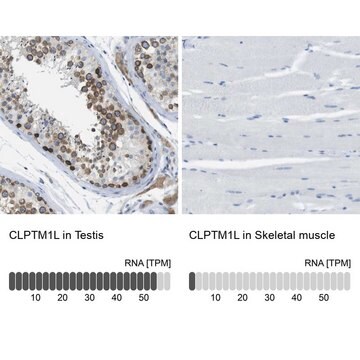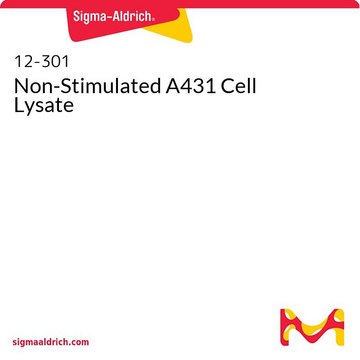MABE416
Anti-Cisplatin DNA Adducts Antibody, clone ICR4
clone 1CR4, from rat
Synonim(y):
CP9/19, Cisplatin DNA modification
About This Item
Polecane produkty
pochodzenie biologiczne
rat
Poziom jakości
forma przeciwciała
purified antibody
rodzaj przeciwciała
primary antibodies
klon
1CR4, monoclonal
reaktywność gatunkowa
human
metody
ELISA: suitable
dot blot: suitable
immunohistochemistry: suitable
izotyp
IgG2aκ
Warunki transportu
wet ice
docelowa modyfikacja potranslacyjna
unmodified
Opis ogólny
Specyficzność
Immunogen
Zastosowanie
Immunohistochemistry Analysis: A representative lot from an independent laboratory detected Cisplatin DNA Adducts in Head and Neck Squamous Cell Carcinoma tissues. (Welters, M. J., et al. (1999). Ann Oncol. 10(1):97-103.).
Epigenetics & Nuclear Function
Chromatin Biology
Jakość
Dot Blot Analysis: A 1:1,000 dilution of this antibody detected Cisplatin DNA Adducts in 1.0 and 0.5 µg of Cisplatin treated DNA from HeLa cell lysates.
Postać fizyczna
Przechowywanie i stabilność
Inne uwagi
Oświadczenie o zrzeczeniu się odpowiedzialności
Nie możesz znaleźć właściwego produktu?
Wypróbuj nasz Narzędzie selektora produktów.
Kod klasy składowania
12 - Non Combustible Liquids
Klasa zagrożenia wodnego (WGK)
WGK 1
Temperatura zapłonu (°F)
Not applicable
Temperatura zapłonu (°C)
Not applicable
Certyfikaty analizy (CoA)
Poszukaj Certyfikaty analizy (CoA), wpisując numer partii/serii produktów. Numery serii i partii można znaleźć na etykiecie produktu po słowach „seria” lub „partia”.
Masz już ten produkt?
Dokumenty związane z niedawno zakupionymi produktami zostały zamieszczone w Bibliotece dokumentów.
Klienci oglądali również te produkty
Nasz zespół naukowców ma doświadczenie we wszystkich obszarach badań, w tym w naukach przyrodniczych, materiałoznawstwie, syntezie chemicznej, chromatografii, analityce i wielu innych dziedzinach.
Skontaktuj się z zespołem ds. pomocy technicznej







